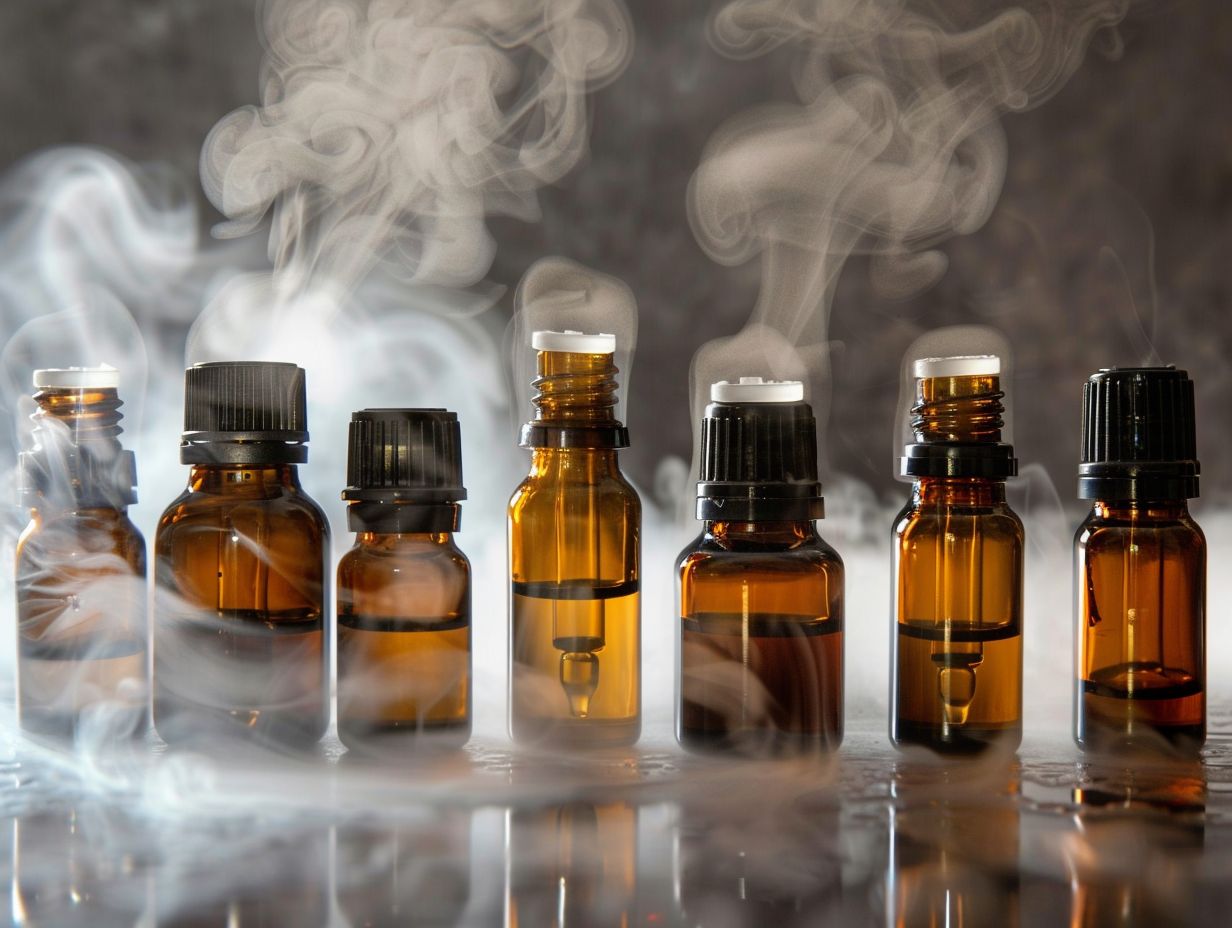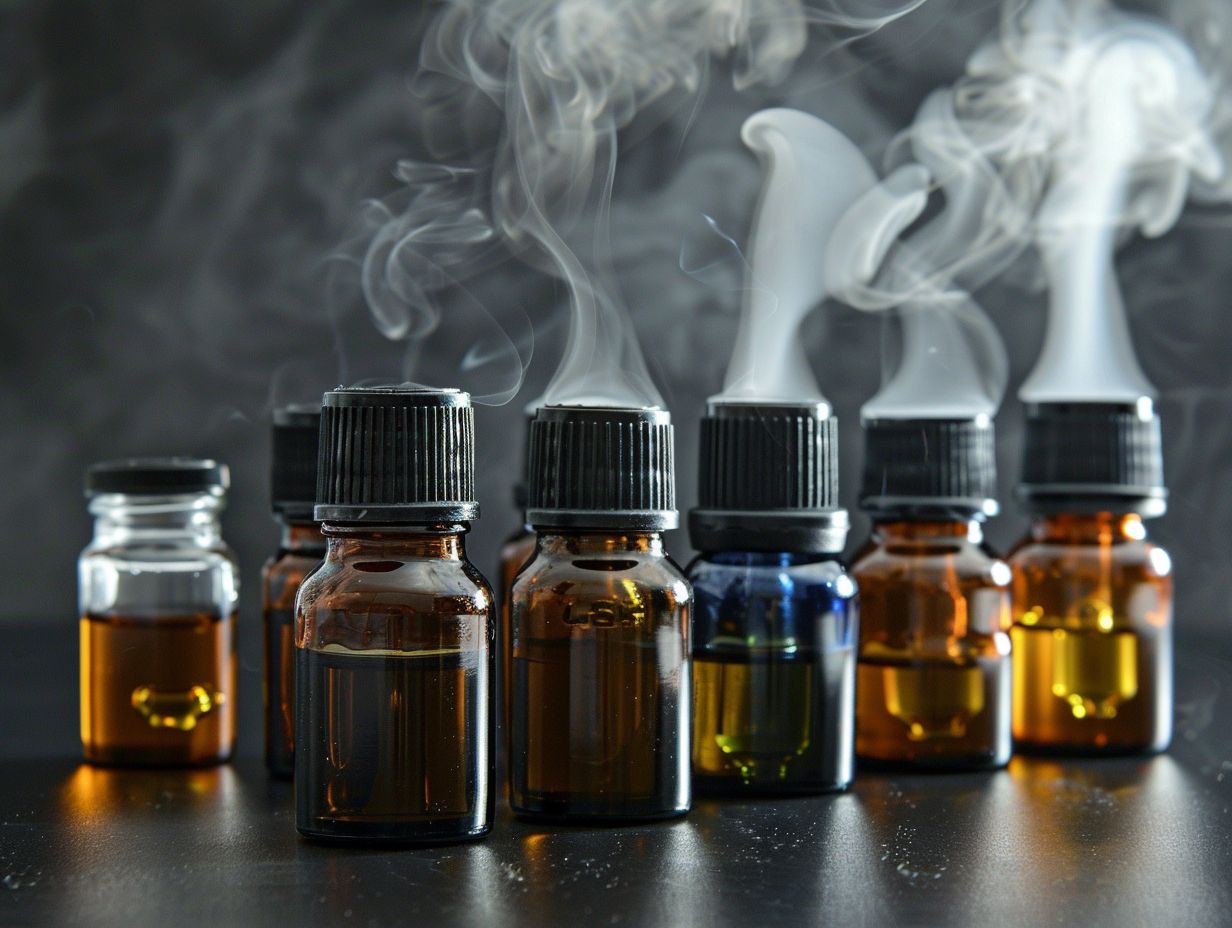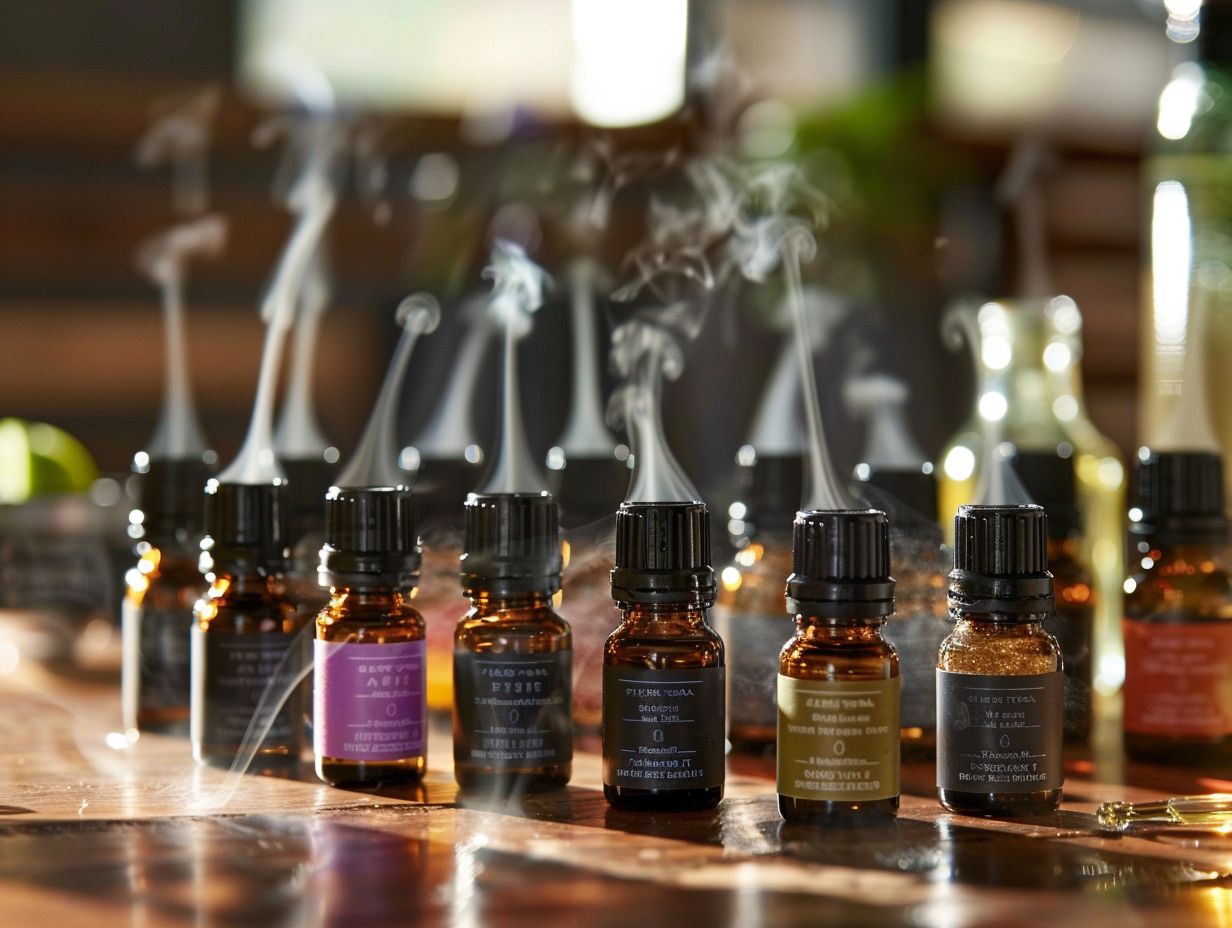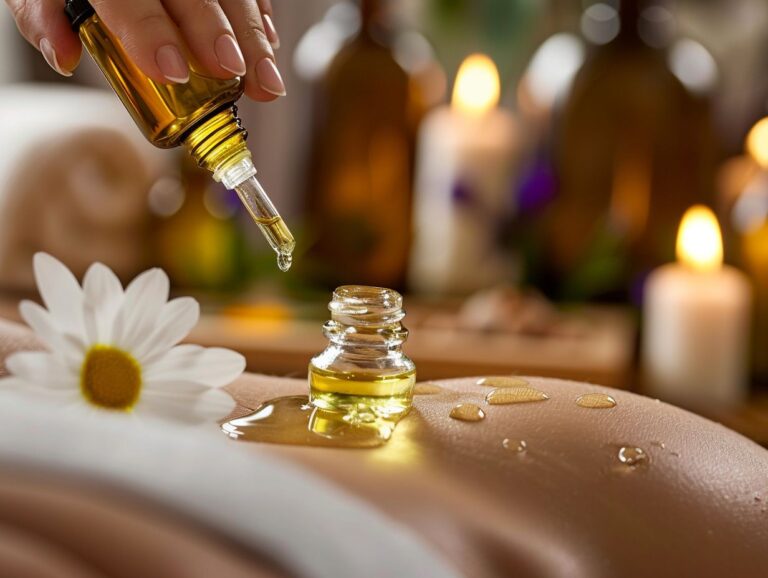What Are Hot Essential Oils
Essential oils have been used for centuries for their various health benefits.
In this article, we will explore the world of hot essential oils and their unique properties. We will discuss the different types of hot essential oils, their chemical components, and how heat affects them.
We will delve into the benefits of using hot essential oils, the various ways to use them, and the potential risks and side effects to be aware of.
Stay tuned to learn about popular hot essential oils and their uses!
Key Takeaways:
What Are Essential Oils?
Essential oils are natural oils extracted from plants that capture the plant’s scent and flavor or ‘essence’. These oils are highly concentrated and need to be diluted before topical application to avoid skin reactions.
One common method of extracting essential oils is through steam distillation, where steam is passed through the plant material, causing the essential oils to evaporate and then condense into a liquid form. This process helps retain the aromatic properties of the plant. Certain essential oils like cinnamon bark and oregano are known for their powerful scents and therapeutic benefits.
What Are the Different Types of Essential Oils?
Essential oils come in various types, including those with hot properties that can cause skin irritation. Examples of such oils are wintergreen known skin irritant, cinnamomum zeylanicum, and others like peppermint and lemongrass.
Wintergreen oil, with its notable irritant effects, falls under the category of ‘hot’ essential oils that need cautious handling. It contains methyl salicylate, which can be too strong for direct application on the skin and requires dilution.
Cinnamon bark oil, another potent ‘hot’ oil, possesses antimicrobial properties but can also be irritating if not properly diluted before use.
Similarly, oregano and thyme oils are valued for their potency but should be used sparingly due to their potential to cause skin sensitivities. It is essential to perform a patch test before using these oils to prevent adverse reactions.
What Makes Essential Oils Hot?
Essential oils are classified as ‘hot‘ based on their chemical composition, particularly containing compounds that can cause a warming sensation on the skin. Wintergreen oils, for example, are known for their heating properties.
These oils are rich in chemical constituents like methyl salicylate, which is responsible for the warming effects they exhibit. When applied topically, the skin absorbs these compounds, leading to increased blood circulation in the area, resulting in the sensation of heat. Due to this intense heat-producing nature, wintergreen and similar oils are considered potent irritants, necessitating dilution before use.
Wintergreen oil, in particular, can cause skin sensitization and irritation if used undiluted, making it crucial to follow proper dilution guidelines to avoid adverse reactions.
What Are the Chemical Components of Hot Essential Oils?
The chemical components in hot essential oils, such as wintergreen, contribute to their heating properties and may trigger reactions in individuals with skin sensitivity. Proper dilution is crucial to mitigate adverse effects.
Essential oils like cinnamon, clove, and oregano contain compounds such as cinnamaldehyde and eugenol, which are responsible for their warming effects on the skin.
Without dilution, these potent oils can cause skin irritation, redness, or even burns, especially on sensitive skin.
Individuals with a history of allergic reactions or skin conditions should always patch test and dilute essential oils before applying them directly to the skin.
How Does Heat Affect Essential Oils?
Heat can intensify the effects of essential oils on the skin, potentially causing a burning sensation if not properly diluted. Dilution is essential to ensure a safe and comfortable experience when using hot oils.
When essential oils come into contact with heat, their molecules become more volatile, increasing their absorption into the skin. This can lead to a more potent effect, which may be too strong for direct application. Diluting essential oils with a carrier oil or water helps to moderate their strength and reduce the chances of adverse reactions.
Without dilution, the concentrated nature of essential oils can overwhelm the skin’s barrier, leading to irritation, redness, or even burns. Properly diluted oils, on the other hand, can be gentler on the skin, promoting better absorption and effectiveness without causing discomfort.
What Are the Benefits of Hot Essential Oils?
Hot essential oils like wintergreen offer a range of benefits, including pain relief, improved circulation, enhanced mood, and respiratory support when used correctly.
Wintergreen oil is particularly known for its analgesic properties, making it a popular choice for relieving muscle and joint discomfort.
- When applied topically, wintergreen essential oil can help soothe sore muscles, reduce inflammation, and promote blood flow to the affected areas.
- Along with wintergreen, other hot oils such as peppermint and ginger are also valued for their ability to provide quick relief from headaches, sinus congestion, and respiratory issues.
Pain Relief

Wintergreen oil is renowned for its pain-relieving properties, making it a popular choice in aromatherapy and topical applications to alleviate discomfort and soreness.
One of the key benefits of wintergreen oil is its powerful analgesic properties, which can help reduce pain and inflammation in muscles and joints. Many people find relief from conditions such as arthritis, back pain, and headaches by using wintergreen oil either through massage or diffusing it in a room. The cooling sensation provided by wintergreen oil can also help soothe minor aches and pains. The anti-inflammatory properties of wintergreen oil make it a valuable natural remedy for sports injuries or conditions like tendonitis.
Improved Circulation
Wintergreen oil can help enhance circulation by promoting blood flow and reducing inflammation, resulting in improved oxygen and nutrient delivery throughout the body.
One of the key reasons why wintergreen oil is effective in enhancing circulation is its vasodilator properties. Vasodilation refers to the widening of blood vessels, which allows for increased blood flow. When applied topically or inhaled, wintergreen oil can help dilate blood vessels, reducing resistance to blood flow. This improved circulation can lead to better oxygen and nutrient delivery to tissues and organs.
Enhanced Mood
Wintergreen oil’s invigorating aroma can uplift mood and mental clarity, making it a popular choice for aromatherapy to promote emotional well-being and relaxation.
Similarly, hot essential oils like cinnamon and ginger are also recognized for their mood-boosting properties in aromatherapy. When inhaled, these oils stimulate the brain’s limbic system, triggering the release of neurotransmitters that help reduce stress and anxiety. This natural process can lead to a sense of calm and improved mood. Incorporating these oils into diffusers or topical applications can create a warm and comforting atmosphere that aids in relaxation and mental focus.
Respiratory Support
Wintergreen oil’s decongestant and expectorant properties can provide respiratory support by clearing airways, easing breathing, and promoting overall respiratory health.
Similarly, hot essential oils like eucalyptus, peppermint, and rosemary have been traditionally used to open up congested sinuses and help expel phlegm, making breathing more comfortable. These oils stimulate the respiratory system, aiding in breaking down mucus and reducing inflammation to improve lung function. By incorporating wintergreen oil and hot essential oils into your routine, you can experience relief from nasal congestion, coughing, and other respiratory symptoms, helping you breathe easier during cold and flu seasons.
What Are the Different Ways to Use Hot Essential Oils?
Hot essential oils can be used in various ways, including topical application, inhalation, and aromatherapy, each method offering unique benefits and applications.
Topical application of hot essential oils is highly effective for quick absorption through the skin, providing localized relief for muscle pain, tension, and skin conditions. Inhaling these oils can help clear congestion, boost respiratory health, and promote relaxation. Aromatherapy, on the other hand, involves diffusing the oils into the air to create a soothing ambiance, uplift mood, and improve mental clarity.
Topical Application
Topical application of hot essential oils involves diluting them with a carrier oil to prevent skin irritation and ensure safe absorption, allowing for targeted relief and skincare benefits.
Hot essential oils provide a warming sensation when applied topically, offering a soothing experience for the skin and muscles. The process of dilution with a carrier oil like coconut, almond, or jojoba oil is crucial to prevent any adverse reactions and sensitivity.
When essential oils are applied directly to the skin without dilution, they can be too potent and may cause irritation, redness, or even burns. Properly diluted oils not only reduce the risk of skin reactions but also help the skin absorb the active compounds more effectively.
Inhalation
Inhalation of hot essential oils involves diffusing them in the air or inhaling them directly to experience their aromatic and therapeutic effects, which can evoke a warming sensation and promote respiratory wellness.
When using the inhalation method, it is crucial to ensure that the essential oils are properly diluted to prevent any potential skin irritation or other adverse reactions. This can be achieved by mixing the essential oil with a carrier oil, such as coconut or almond oil, before dispersing them into the air.
Inhaling these oils not only creates a comforting environment but also helps to clear the nasal passages and support overall respiratory health. The molecules from the oils can travel through the nasal cavity and into the lungs, providing a gentle and natural way to enhance well-being.
Aromatherapy

When essential oils are heated, their aromatic molecules are released into the air, interacting with the olfactory system and promoting various physiological responses.
Dilution is crucial to avoid skin irritation, as the concentrated form of essential oils can be too potent for direct application.
By blending essential oils with carrier oils or water, you can create a safe and effective mixture that not only prevents adverse skin reactions but also helps optimize the aromatic benefits for a more potent therapeutic experience.
Are There Any Risks or Side Effects of Using Hot Essential Oils?
While hot essential oils offer numerous benefits, there are potential risks associated with their use, including skin irritation, photosensitivity, allergic reactions, and toxicity if used improperly or in high concentrations.
For minimize the risks when using hot essential oils, it is crucial to follow proper guidelines.
Dilution ratios play a key role in ensuring safe usage. Adding a few drops of essential oil to a carrier oil such as coconut or jojoba oil helps reduce the concentration and potential adverse effects. Performing a patch test before applying the oil to a larger area is highly recommended. This involves applying a diluted solution on a small patch of skin and waiting to observe any negative reactions over 24 hours.
Skin Irritation
Certain essential oils can irritate the skin, especially when applied undiluted or in high concentrations, leading to redness, itching, or burning sensations. It is essential to dilute these oils and perform a patch test before use.
When essential oils are used undiluted, the concentrated nature of these oils can be too harsh for the skin, causing reactions such as inflammation or rashes. High concentrations of oils that are known skin irritants, like citrus oils or peppermint, can even lead to blistering in extreme cases. Not only can these oils impact the skin, but they also have the potential to irritate mucous membranes, such as those in the nose or mouth, if not properly diluted. This is why conducting a patch test is crucial before incorporating any new essential oils into your skincare routine.
Photosensitivity
Hot essential oils can increase skin sensitivity to sunlight, leading to photosensitivity reactions and skin damage if exposed to UV rays after application. Caution is advised when using these oils, especially before sun exposure.
The risk of photosensitivity from certain essential oils is a serious concern, as it can result in severe skin reactions when exposed to sunlight. Therefore, it is crucial to be mindful of the potential dangers associated with hot oils and UV exposure. To stay safe, it is recommended to avoid direct sunlight for at least 12 hours after using these oils on the skin. Applying these oils in the evening or before going to bed can help reduce the risk of sun exposure.
When using hot essential oils during the day, it is essential to protect your skin by wearing clothing that covers the treated areas or by using sunscreen with a high SPF. Taking these precautions can help prevent sunburns and other skin issues caused by photosensitivity reactions.
Safety measures like using a diffuser instead of applying hot oils directly on the skin or opting for non-photosensitive oils when going outdoors can also help minimize the risk of skin damage. Being aware of these risks and taking necessary precautions can ensure a safe and enjoyable experience when using essential oils.”
Allergic Reactions
Allergic reactions to essential oils can occur in individuals with sensitivities, manifesting as skin rashes, hives, or respiratory symptoms. Proper dilution and patch testing are crucial to identify and prevent allergic responses.
One key aspect to note is that essential oils are highly concentrated plant extracts and can be potent substances, thus increasing the likelihood of triggering allergies in susceptible individuals. When using essential oils, it is essential to dilute them properly with carrier oils to reduce the risk of adverse reactions.
Conducting a patch test before widespread use can help assess skin sensitivity. If an allergic reaction does occur, common symptoms may include itching, redness, or swelling. To manage such reactions effectively, immediately wash off the essential oil, apply a soothing cream, and seek medical attention if symptoms persist or worsen.
Toxicity
Excessive use or ingestion of hot essential oils can lead to toxicity, causing symptoms such as nausea, dizziness, or skin irritation. Proper storage, handling, and dilution with carrier oils are essential to minimize the risk of toxicity.
When using hot essential oils, it is crucial to be mindful of their concentrated nature. Inhalation or skin application of undiluted oils can potentially result in adverse reactions.
Dilution with carrier oils serves as a safe practice, reducing the risk of skin irritation and sensitivity. It is recommended to follow specific dilution ratios based on the type of essential oil used.
Ingestion of essential oils should only be done under the guidance of a qualified practitioner, as internal use without proper knowledge can lead to serious health complications.
How Should Hot Essential Oils Be Stored and Handled?
Proper storage and handling of hot essential oils are crucial to maintain their potency and prevent reactions. Store oils in dark, cool environments and ensure they are properly diluted before use to avoid skin irritations.
When storing hot essential oils, it is best to keep them away from direct sunlight and heat sources, as exposure to light and warmth can lead to oxidation and degradation of the oils. To maintain their effectiveness, consider storing them in amber or cobalt blue glass bottles to protect them from UV rays. Always keep the lids tightly sealed to prevent air exposure, which can also affect the quality of the oils.
Proper dilution is crucial to reduce the risk of skin sensitivities or adverse reactions. It is recommended to dilute hot essential oils in a carrier oil, such as coconut oil or jojoba oil, before applying them topically.
What Are Some Popular Hot Essential Oils and Their Uses?

Peppermint oil, known for its cooling sensation, is excellent for alleviating headaches, muscle aches, and sinus congestion when diffused or applied topically.
Cinnamon bark oil, with its warm and spicy aroma, can promote circulation, support immune function, and create a cozy ambiance in the home.
Oregano oil is valued for its antibacterial properties and is commonly used for immune support and combating colds.
Thyme oil, renowned for its cleansing properties, can be beneficial for skin issues and respiratory health when used in aromatherapy or diluted for topical application.
Frequently Asked Questions
What Are Hot Essential Oils?
Hot essential oils are a type of essential oil that contain high levels of chemical constituents, making them potent and potentially irritating to the skin.
What makes an essential oil ‘hot’?
Essential oils are considered hot when they contain high levels of phenols, aldehydes, and/or ketones. These chemical components have a warming sensation on the skin and can cause irritation if used improperly.
What are some examples of hot essential oils?
Common hot essential oils include cinnamon, clove, oregano, thyme, and lemongrass. These oils should be used with caution and in diluted form to avoid skin irritation.
Can hot essential oils be used safely?
Yes, hot essential oils can be used safely when proper dilution and usage guidelines are followed. It is important to always do a patch test before using these oils topically and to dilute them with a carrier oil.
What are the benefits of using hot essential oils?
Hot essential oils have a variety of potential benefits, including promoting circulation, reducing inflammation, and providing a warming sensation. These oils are also commonly used for their antimicrobial and antiseptic properties.
Are there any precautions when using hot essential oils?
Yes, it is important to use caution when using hot essential oils. These oils should always be diluted and should not be used on sensitive or damaged skin. It is also recommended to avoid using hot essential oils during pregnancy or while breastfeeding. Consult with a certified aromatherapist for proper usage guidelines.







